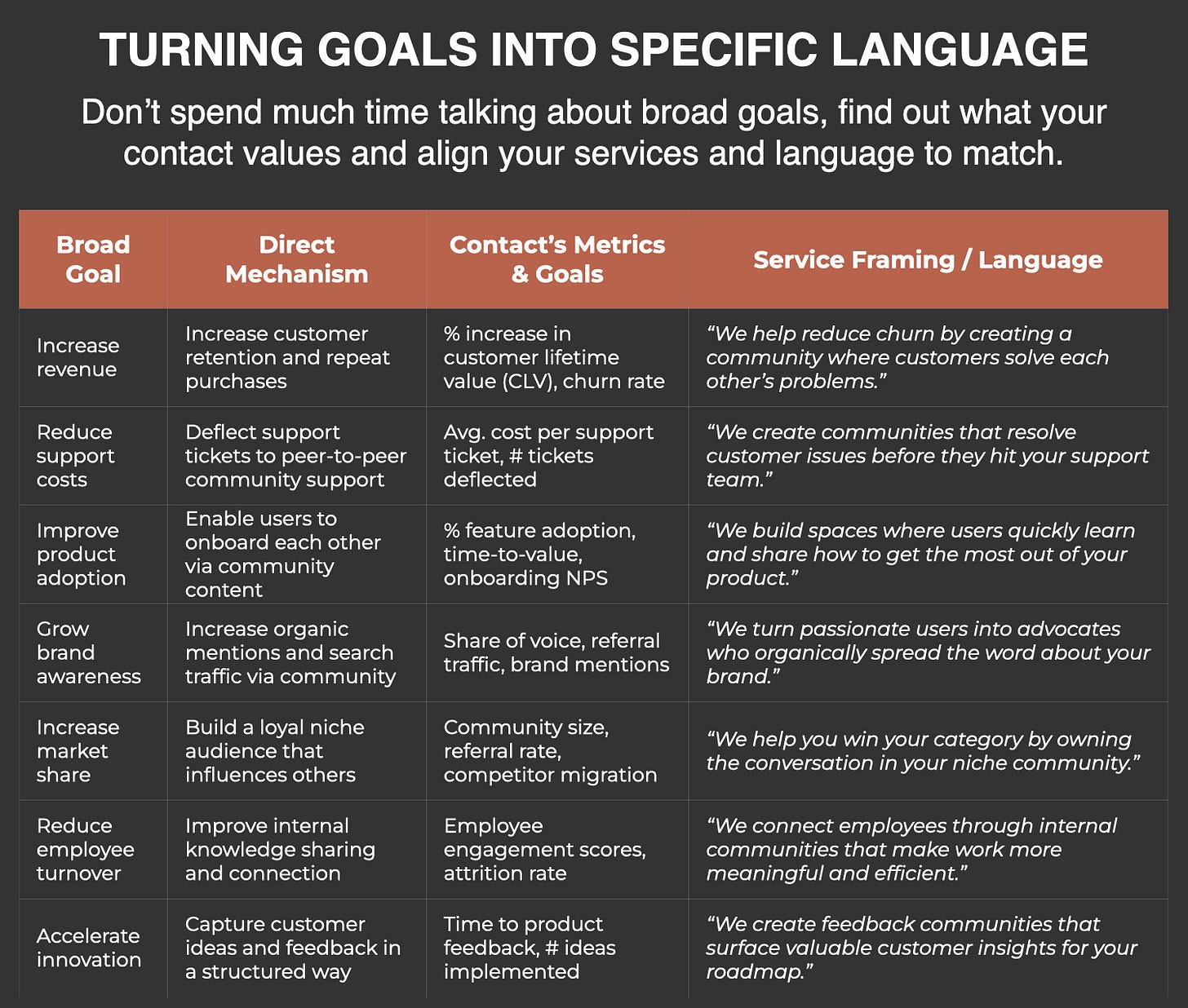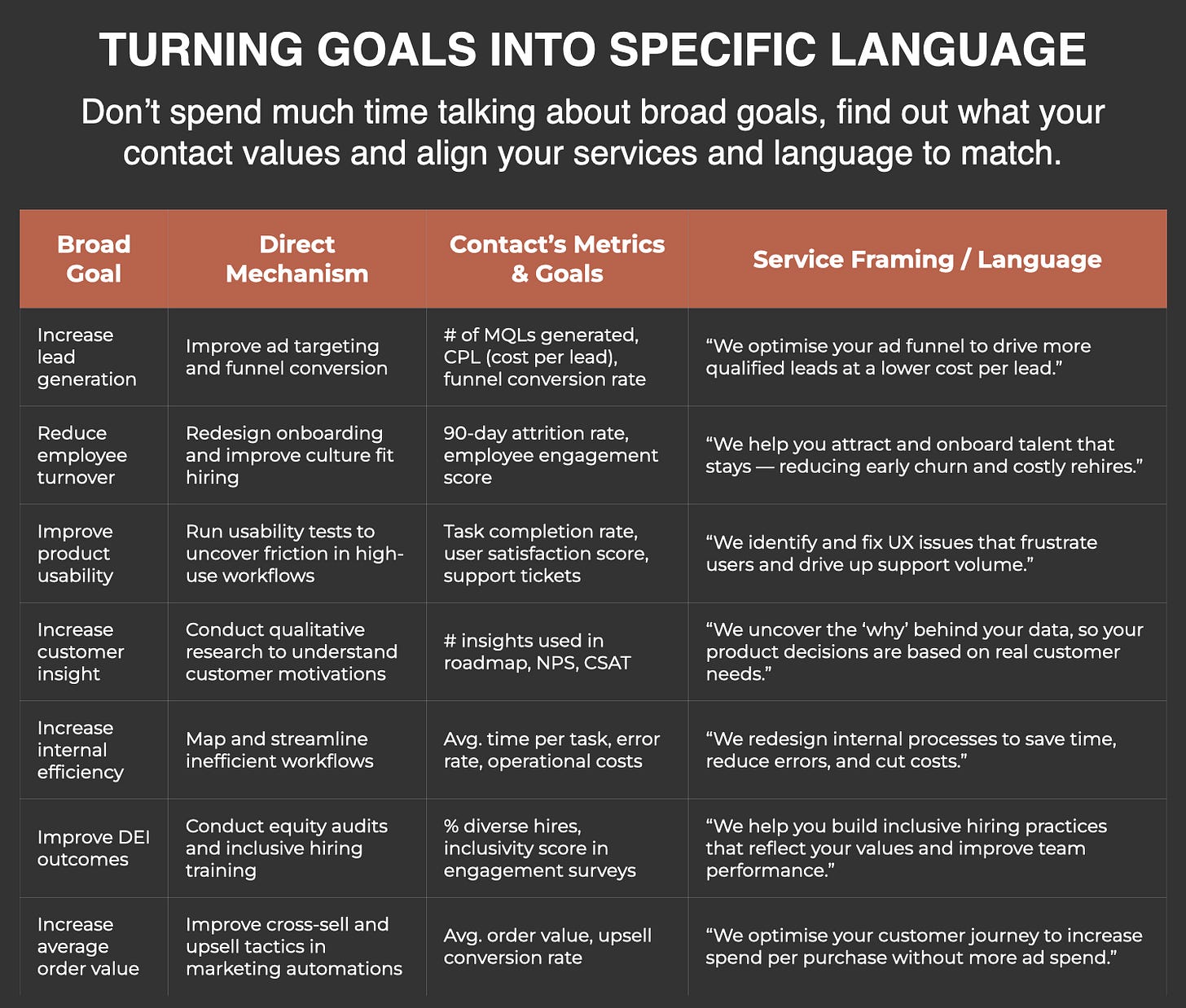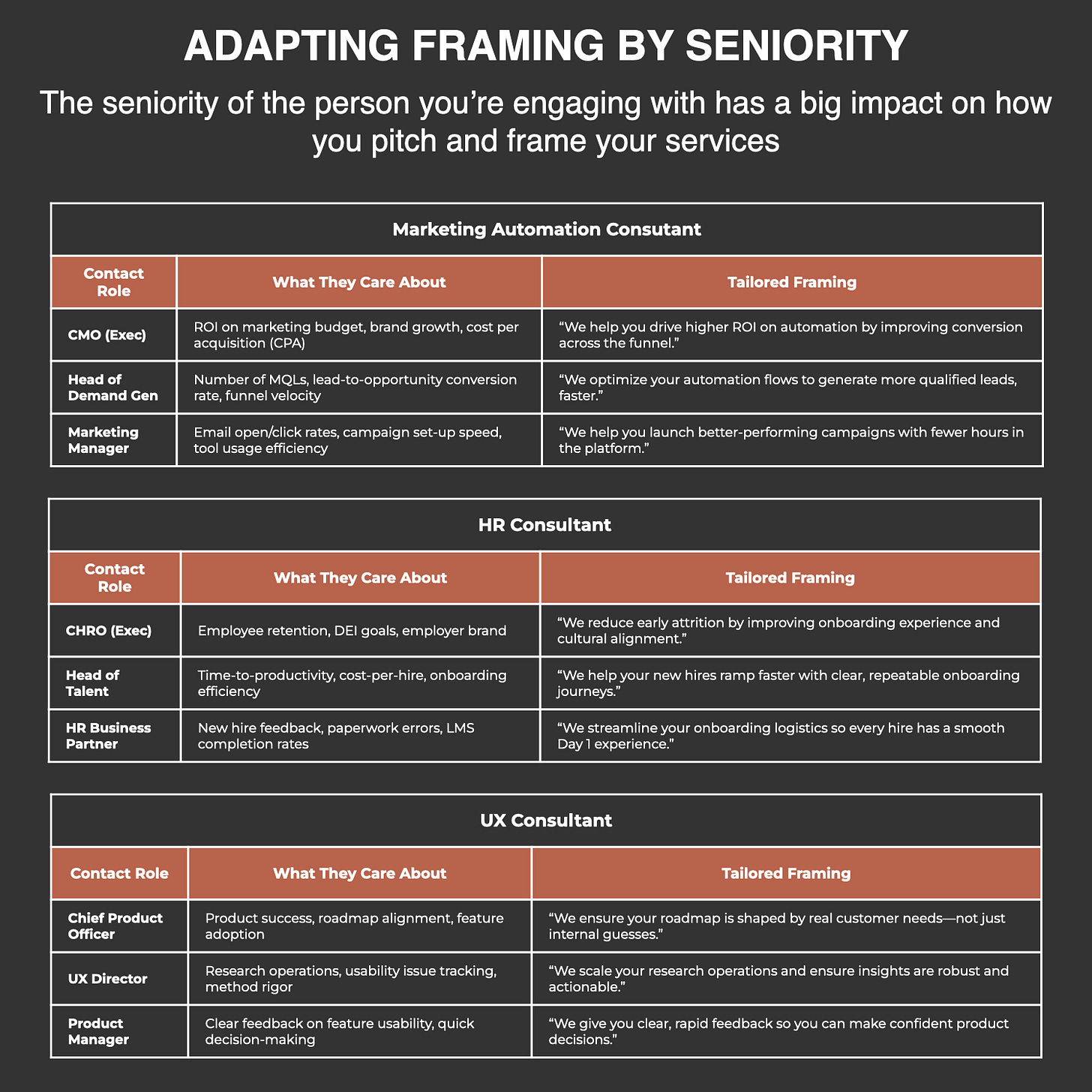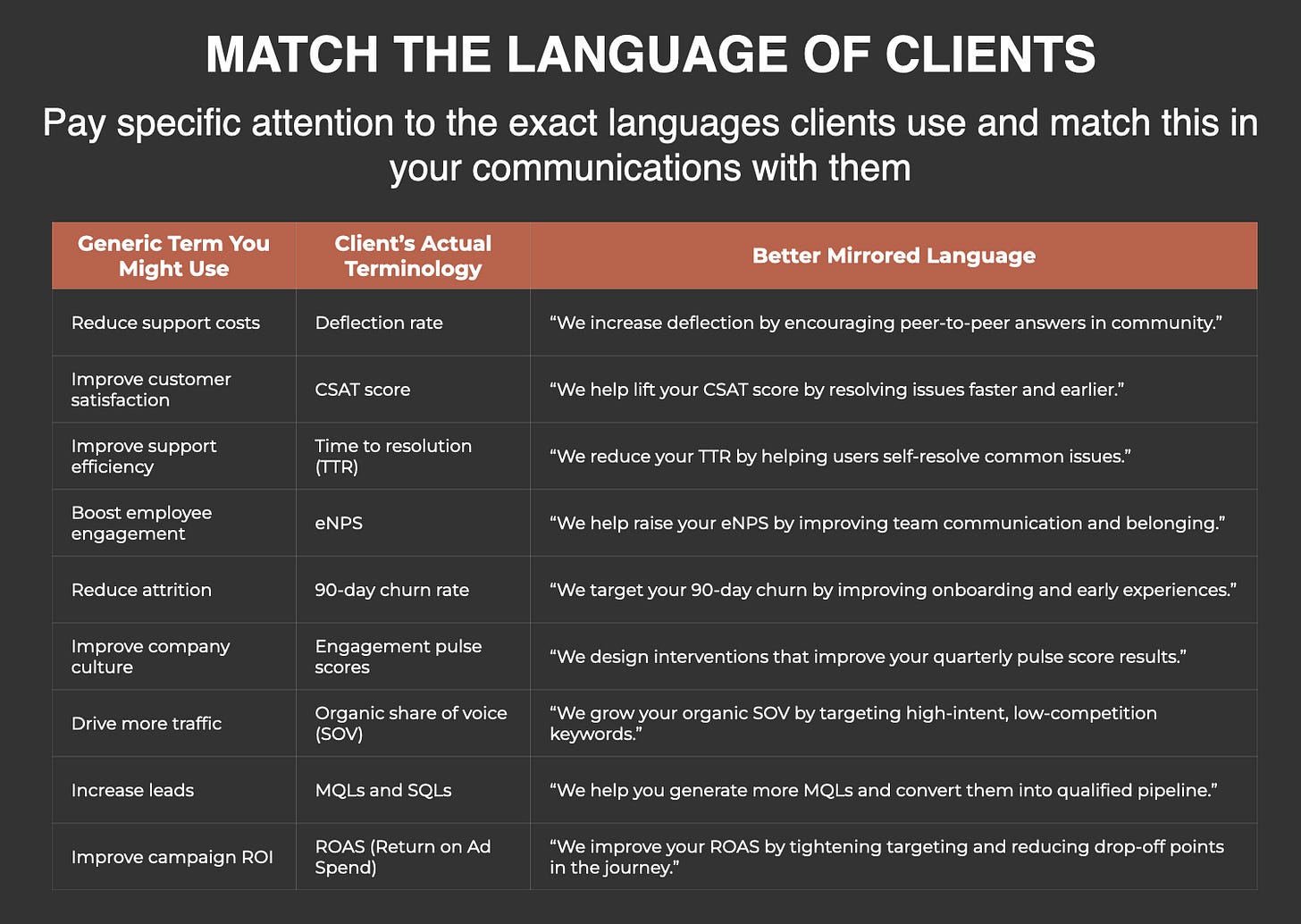Metric Matching: Align Your Services To Metrics Contacts Care About
I've noticed many consultants pitch their services at the wrong level. You need to ensure you're framing your service to match the contact's metrics and level of seniority.
Hi, I’m Rich. Welcome to my weekly newsletter where I share systems and frameworks for scaling your consulting practice from $0 to $1m+ in revenue.
You can get 1:1 personal coaching or explore my new course: Proposal Mastery: Learn To Write Winning Business Proposals.
No, Your Services Don’t Maximise ROI
An interesting topic arose in a coaching call recently; talking to contacts at their level.
This is the idea that you have to pitch your knowledge and expertise to be at the contact’s level (not the organisation’s level).
A good example of this is how you describe your services.
In my sector, for example, I notice that plenty of consultants will use an expression like:
We’ll help you build communities which maximise your ROI.
This is similar to when a consultant says their [services] will increase [client’s] profits.
The problem isn’t that it’s not true, it’s that it’s so mind-numbingly obvious that it doesn’t need to be said. By saying it, you’re indicating that you’re not thinking deeply enough about the client and your contact’s specific needs. You need to go a little deeper than this.
Understand The Metrics To Know The Game You’re Playing
Yes, the goal of pretty much every company is to increase profits, but so much goes into that that it’s typically two to three layers removed from the work you’re doing. What you need to figure out is:
What is the very direct mechanism through which the work you’re doing increases profits?
What objectives did your contacts hold you accountable for?
How are those objectives measured?
This provides a more precise way to tailor your services and language to appeal to prospective clients.
It also forces you to think through things more deeply and ensure the work you’re doing is aligned with what clients actually need.
My niche in building customer communities is an obvious example to use here. Few things can seem as superfluous to brands as building a community to give customers the feels.
But what happens when you adjust the language as we see below?
It’s now very clear to people how a community helps an organisation. You can see how the mechanism is precise, and we’re using the language which aligns with the context and goals. We’re not just talking about vague promises of ROI now; we’re talking at the client’s level.
Vague outcomes (e.g. “grow your brand” or “improve operations”) weaken your positioning and make your value harder to justify. Being specific isn't just persuasive; it's also a key to charging premium rates and avoiding commoditization.
You can see more examples of this in different sectors below:
Again, what you’re trying to do here is to talk to clients in the language that connects with the metrics they’re held accountable for, not high-level organisation-wide goals.
That might work for smaller organisations, but it’s never a good fit for larger organisations.
If you want to understand the behaviours and drivers of anyone in any organisation, look at the metrics they are held accountable for.
Ultimately, clients aren’t looking for vendors, they’re looking for trusted advisors who can speak their language and deeply understand their world. The sooner you can do that, the more successful you will be.
Company Size And Roles Matter A Lot
A caveat to this is that it varies a lot by the size of the organisation and the seniority of the person you’re engaging with. If you go high enough, you will absolutely talk with someone who cares about the higher-level goals. You have to adapt to the level of the person you’re engaging with.
The lower the level, the more in the weeds you need to be.
If you talk to people at the wrong level, you’re not going to be able to connect the way you need to.
Likewise, the company size will have an impact. In smaller organisations, you are dealing with the CEO who only cares about getting leads and increasing profits.
Embrace The Language, Not Just The Metrics
It’s not enough to understand the metrics your clients care about; you also need to use the exact words they use to describe them. This slight shift builds trust, shows you truly understand their world, and avoids sounding like an outsider guessing at impact.
You get the idea: the more you embrace clients' language, the more persuasive you will be.
Summary
Many consultants rely on generic claims like "increase ROI" or "boost profits" to describe their services, but this vague language fails to resonate with clients. To be persuasive and credible, you need to pitch your expertise at the client’s level by:
Identifying the specific mechanism through which your work impacts business outcomes.
Understanding the individual metrics your contact is accountable for.
Using the language your client uses to describe those metrics.
Success in consulting comes from adapting your framing to the person’s role and organisation size. Senior execs may care about broad goals, but very specific performance indicators judge mid-level contacts. Speaking directly to those helps avoid commoditisation and positions you as a trusted advisor, not a generic vendor.
Ultimately, it's not just about knowing the client’s metrics; it’s about speaking their language and showing that you understand their world.
Good luck!
Connect with Rich
Are you new to the newsletter? Subscribe for free
Follow me on LinkedIn for more insights
Learn to write persuasive business proposals with my Proposal Mastery course.
Get 1 to 1 personal coaching. Get a personal coach to help you grow your consultancy practice. Tackle topics like positioning, client acquisition, delivering exceptional value, industry leaderships, and building the systems to thrive. Hit reply or learn more about my coaching approach.





